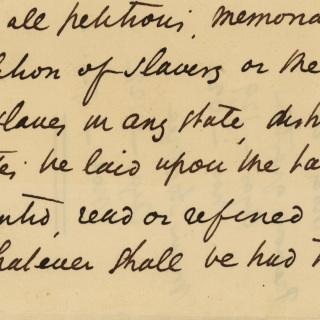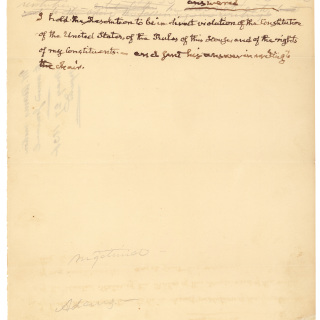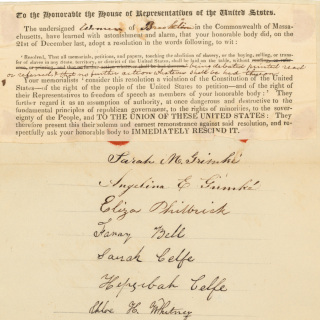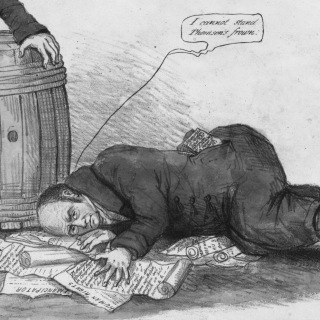The Gag Rule–Silencing Abolitionists 1836
Nineteenth-century Americans heartily exercised their First Amendment right “to petition the government for a redress of grievances.” Anti-slavery petitions accounted for many of the petitions that flooded Congress in increasing numbers. This only caused pro-slavery politicians to dig in their heels.
In May 1836, the House passed a resolution that automatically “tabled” all petitions relating to slavery without hearing them. Congressman (and former President) John Quincy Adams fought the rule. As stricter versions of the rule were passed in subsequent sessions, more Northern Congressmen supported Adams’s argument that, whatever one’s view on slavery, stifling the right to petition was wrong. In 1844 the House rescinded the gag rule on a motion made by John Quincy Adams.



